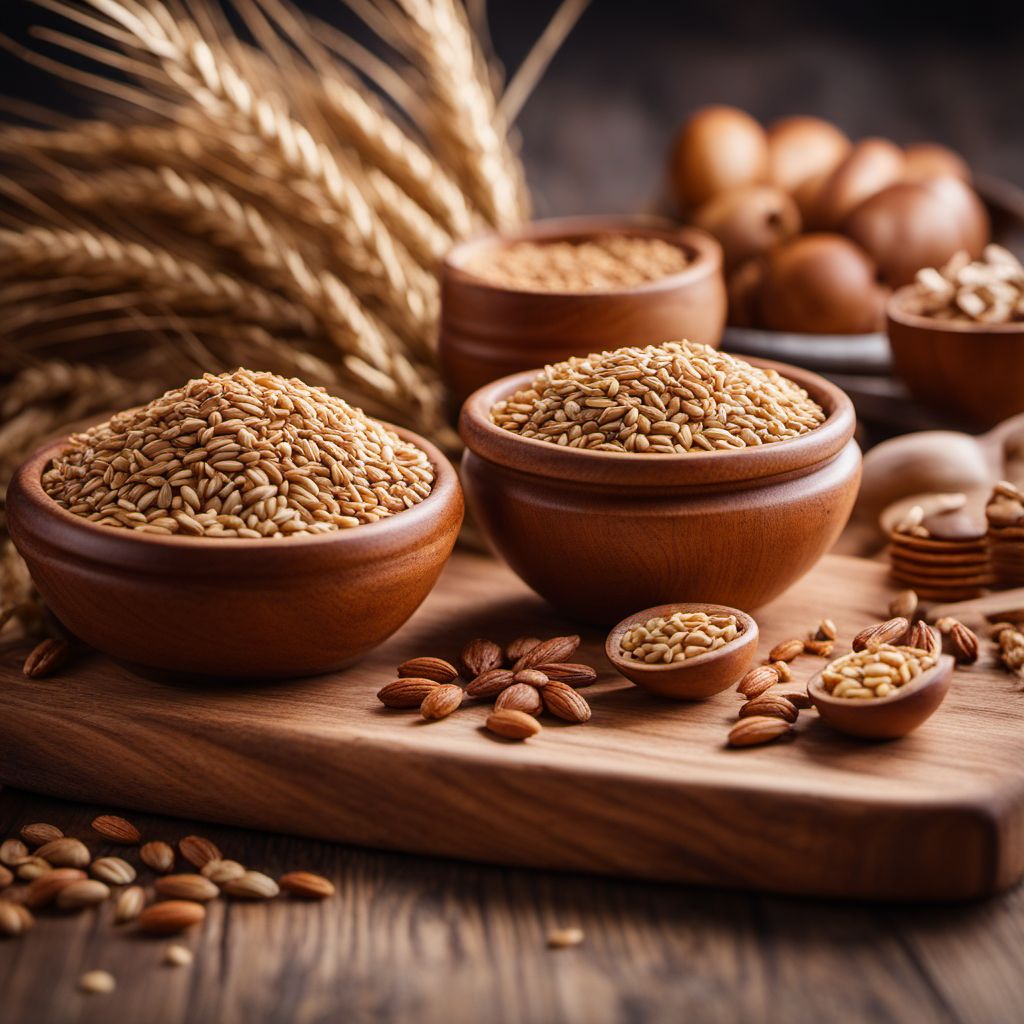
Ingredient
Rye and similar-
The Wholesome Grain: Exploring the Versatility of Rye and Similar Ingredients
Rye and similar ingredients, such as spelt and barley, are hearty grains with a distinct nutty flavor and a dense, chewy texture. They are characterized by their elongated shape and a dark brown color. Rye flour is commonly used in baking, while whole rye berries can be cooked and added to salads, soups, or used as a base for pilafs. These grains are known for their nutritional value and ability to add depth to various dishes.
Origins and history
Rye has been cultivated for thousands of years and has its origins in Eastern Europe and Asia. It played a significant role in the diets of ancient civilizations, including the Egyptians and Romans. Rye became particularly popular in Northern and Eastern Europe, where it thrived in colder climates and became a staple grain. It has since spread to other parts of the world, including North America.
Nutritional information
Rye and similar ingredients are rich in dietary fiber, providing a good source of carbohydrates, protein, and essential minerals such as manganese, phosphorus, and magnesium. They are also low in fat and cholesterol, making them a healthy choice for a balanced diet.
Allergens
Rye and similar ingredients contain gluten, making them unsuitable for individuals with gluten sensitivities or celiac disease.
How to select
When selecting rye and similar ingredients, look for grains that are plump, clean, and free from moisture or signs of insect damage. Opt for organic or locally sourced options whenever possible to ensure the highest quality.
Storage recommendations
To maintain the freshness and quality of rye and similar ingredients, store them in airtight containers in a cool, dry place. Whole grains can be stored for up to a year, while rye flour should be used within a few months to prevent it from going rancid.
How to produce
Rye and similar grains can be grown by amateur gardeners in regions with cooler climates. They require well-drained soil and regular watering. It is recommended to consult local agricultural extension services or gardening resources for specific cultivation instructions.
Preparation tips
Rye and similar ingredients can be prepared by boiling or simmering them in water or broth until tender. They can be used as a base for salads, added to soups or stews, or incorporated into baked goods. Rye flour is commonly used in bread-making, lending a distinct flavor and texture to the final product. Experiment with different recipes and cooking techniques to fully explore the versatility of these grains.
Substitutions
If rye or similar ingredients are not available, you can substitute them with other hearty grains such as wheat berries, quinoa, or farro, depending on the desired texture and flavor.
Culinary uses
Rye and similar ingredients are commonly used in various culinary applications. Rye bread is a classic example, known for its dense texture and distinctive flavor. Rye flour can also be used to make pancakes, muffins, or cookies. Rye berries can be added to salads, pilafs, or used as a stuffing for vegetables. These grains are also used in the production of whiskey and beer.
Availability
Rye and similar ingredients are commonly available and cultivated in regions such as Northern and Eastern Europe, North America, and parts of Asia.
